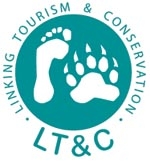
Linking Tourism and Conservation (LT&C) is partnering with IIPT to bring together a panel at the UNWTO-IIPT Global Summit highlighting the important role of Trans-Border Peace Parks in contributing to both conservation and peace. The Global Summit is being held in Montreal, 17-21 September 2017.
The concept of trans-border protected area cooperation through the establishment of international peace parks has been an accepted concept that likely began in Europe with the international peace park developed by the Swedish and Norwegian Peace Movements in 1914 to celebrate 100 years of peace between Sweden and Norway, now named Morokulien. In North America, Waterton-Glacier International Peace Park between Alberta and Montana was the first international peace park to be dedicated (1932) and since designated as a World Heritage Site.
The concept of Transborder Peace Parks has long been promoted by The World Conservation Union (IUCN) because of their many associated benefits. The Montreal Session on Trans-border Peace Parks will highlight specific examples and functioning partnerships from different countries regarding their respective experience and effective practices that benefit sustainable tourism, nature conservation, and the promotion of peace among the countries involved. Facilitating the session will be Dr. Peter Prokosch, CEO of LT&C who has some 40 years of environmental and conservation experience spanning national parks, mountains, forests, seas, oceans and wildlife; and the geographic regions of Europe, Africa, the Arctic and USSR/Russia. His work has involved collaboration with numerous prestigious environmental and conservation organizations and countries.
Models to be shared will include: Wadden Sea, how three countries, Denmark, Germany and the Netherlands, cooperate on what is today a World Heritage site; the eight Arctic countries cooperating within the Arctic Council to create a Circumpolar Polar Protected Area Network; and the Green Belt along the former iron curtain with cooperation among Russia, Norway and Finland.
The session provides an opportunity to look at different partnerships and cross-boundary cooperation on protected areas and what could be learned from those examples regarding the establishment of peaceful relationships between countries, while also serving to protect and enhance the environment with the aim of encouraging replication in other regions of the world.
Linking Tourism and Conservation (LT&C) is an innovative shared network designed to develop resources and incentives for replication of sustainable tourism best practices that support the establishment and management of national parks and other forms of protected areas. LT&C works with individuals, businesses, and governments to strengthen the benefits of both sustainable tourism and environmental protection. LT&C’s vision is a world, where travelers are inspired by experiencing nature and the beauty of natural landscapes. This is supported through a global network of well-managed protected areas that represent the world’s diversity of habitats and ecosystems.
About IIPT
The International Institute for Peace through Tourism (IIPT) is a not for profit organization dedicated to fostering travel and tourism initiatives that contribute to international understanding, cooperation among nations, an improved quality of environment, cultural enhancement and the preservation of heritage, poverty reduction, reconciliation and healing wounds of conflicts; and through these initiatives, helping to bring about a peaceful and sustainable world. It is founded on a vision of the world’s largest industry, travel and tourism – becoming the world’s first global peace industry; and the belief that every traveler is potentially an “Ambassador for Peace.”





